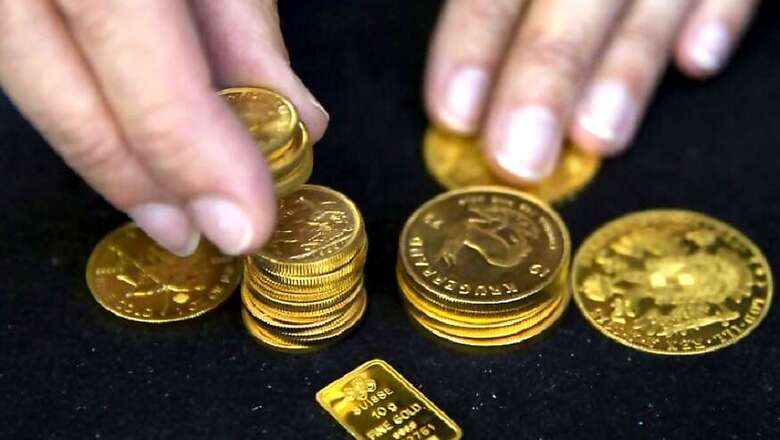
views
London: Global gold demand rose 8% in the first half of this year to the highest since 2016, driven by central bank buying and a flood of investment into gold-backed exchange traded funds (ETFs), the World Gold Council said on Thursday.
Retail investors however were put off buying bars and coins by a rapidly rising gold price, the WGC said in its latest Gold Demand Trends report.
The price rally to six-year highs above $1,400 an ounce in June also saw gold holders cash in metal for profit, causing a boom in recycling that raised global supply by 6%, the WGC said.
The world's appetite for gold was 2,182 tonnes over January-June, up from 2,021 tonnes in the same period of 2018, according to the WGC.
In the second quarter, demand was 1,123 tonnes, compared to 1,039 over April to June 2018.
"We believe the factors underpinning ETF inflows and central bank buying, including looser monetary policy and geopolitical uncertainty, will continue," the WGC's head of market intelligence Alistair Hewitt said.
"Consumer demand, however, may be a bit soft as people adapt to the higher price level," he added.
Gold is traditionally seen as a safe investment in uncertain times. Looser monetary policy drags down bond yields, making non-yielding gold more attractive.
The WGC said central banks bought 224.4 tonnes of gold in the second quarter, taking their purchases to 374 tonnes over the first half. That was up from 238 tonnes in 2018, and the most for any first half since at least 2000.
Holdings of gold in ETFs rose by 67.2 tonnes over April-June and 107.5 tonnes in the first half to a six-year high of 2,548 tonnes, the WGC said.
But purchases of bars and coins fell 12% in April-June to 218.6 tonnes as Chinese demand slumped, taking the first-half total to 477 tonnes, the lowest in a decade.
Jewellery demand rose 2% to 531.7 tonnes in the second quarter, supported by a 12% rise in India. Total demand in the first half was 1,062 tonnes, the WGC said.
Hewitt forecast full-year consumption of gold in China at 900-1,000 tonnes and in India at 750-850 tonnes. Central banks will likely buy 500-600 tonnes in 2019, though this forecast could be exceeded, he said.
Supply of gold expanded 6% in the second quarter to 1,186.7 tonnes thanks to higher mine production and a 9% increase in recycling to 314.6 tonnes.
That brought first-half supply to 2,324 tonnes, the highest since 2016, according to the WGC.
GOLD DEMAND (T)*
Q2 2019 Q2 2018 % change
Jewellery 531.7 520.8 2%
Technology 81.1 83.3 -3%
Investment 285.8 282.0 1%
- Bar and coin 218.6 248.2 -12%
- ETFs and similar 67.2 33.8 99%
Central banks 224.4 152.8 47%
TOTAL 1,123.0 1,038.8 8%
* World Gold Council, Gold Demand Trends Q2 2019




















Comments
0 comment